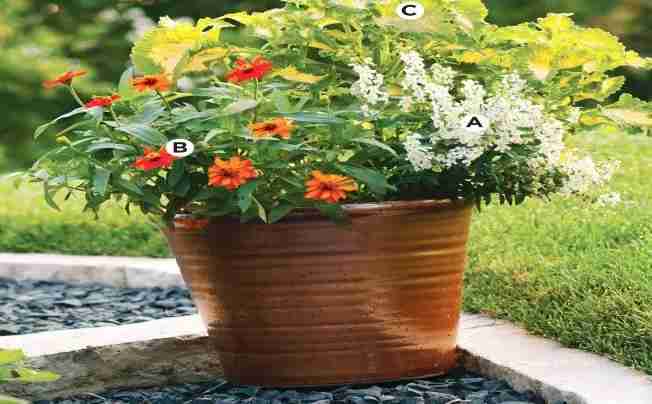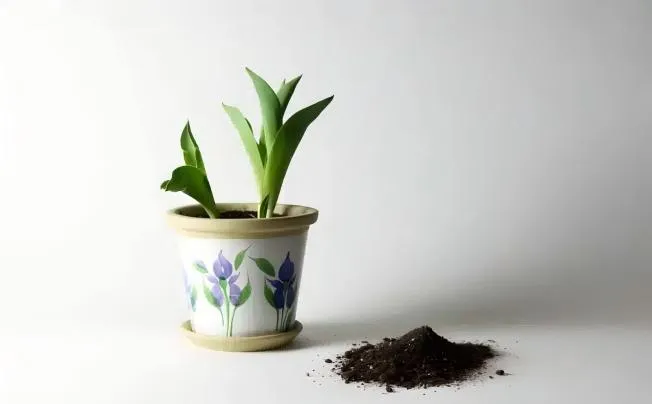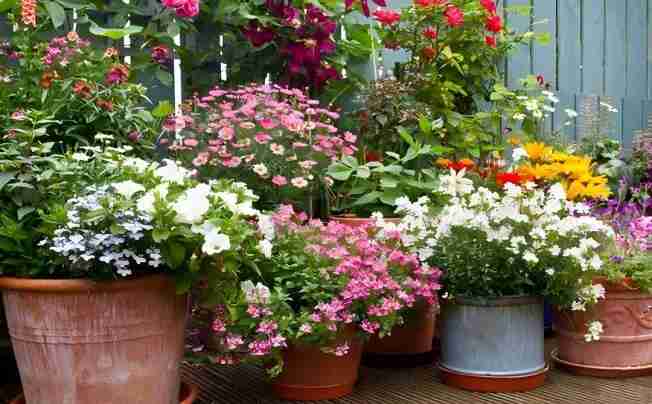Do Plants Grow Better In Fabric Pots?
As gardening enthusiasts continue to explore better planting methods, fabric flower pots are gradually emerging among many types of flower pots due to their unique material properties.
Advantages of fabric flower pots
Outstanding breathability
Use the typical non-woven fabric as an illustration. Its fibre structure is interspersed with numerous small pores. Air can readily move between the soil and the outside world thanks to these pores, which function as innumerable tiny windows. The roots of plants must breathe, take up oxygen, and release carbon dioxide as they grow. Long-term moisture in the fabric flower pot with good air permeability makes it difficult for hazardous pathogens to develop in the soil, resulting in a healthy aerobic environment for the roots of the plants.
Notable root control impact
The cloth flower container has a strong root control effect because of its special construction. When the plant roots reach the flower pot's edge and come into contact with the fabric, they will produce more fibrous and lateral roots close to the contact point rather than continuing to grow along the pot's wall as they would in regular flower pots because of the physical blocking of the fabric and the air pruning effect.
Convenient drainage function
The material's water permeability allows extra water to be swiftly released from the flower pot, hence preventing the issue of water buildup. Water can quickly permeate through the fabric to maintain the soil relatively moist when we water the plants, even if we unintentionally water them too much. On the other hand, conventional flower pots made of ceramic or plastic frequently have slower drainage and fewer drainage holes, which can easily result in water buildup and leave plant roots submerged in water for an extended period of time, ultimately leading to root rot. Fabric flower pots function similarly to an effective drainage system, keeping the soil consistently dry and fostering a favourable environment for plant roots to flourish.

Limitations of Fabric Planters
Inadequate water retention
Water evaporates rapidly because of the material's porosity. Plants in fabric pots may require more frequent watering than those in conventional pots in hot, dry conditions. This feature of fabric pots may make maintenance more difficult for certain plants, including ferns and monstera, that demand a lot of water and require a reasonably constant humidity level in their growing environment. A layer of moisturising material, like moss, pine scales, etc., can be placed on the soil surface to reduce water evaporation, or a tray can be placed at the bottom of the fabric pot to hold a specific amount of water so that the plants can absorb water through the capillary action at the bottom, extending the watering interval.
Not enough resilience
Pots made of fabric are not as durable as those made of ceramics, plastics, and other materials. Fabric materials are vulnerable to UV degradation from prolonged exposure to sunshine, which causes fading, ageing, and damage. Additionally, fabric pots are more likely to sustain damage during extreme weather events like intense winds and torrential rain. Additionally, if fabric pots are inadvertently tugged or squeezed while being transported, they may potentially tear. Fabric flower pots can be kept out of direct sunlight, as on the interior of a balcony or somewhere with sunshades, to prolong their useful life. However, when transferring them, they should be handled carefully and not too forcefully. At the same time, you can prolong the flower pots' service life to some degree by routinely inspecting them and quickly identifying and fixing any minor damage.

How to choose and use fabric flower pots?
Important considerations for flower pot size selection Because different plant species have different root growth habits and sizes, so do the requirements for flower pot sizes. For small herbaceous plants, which have relatively small root systems and slow growth rates, a fabric flower pot with a diameter of 10-15 cm can generally meet their needs. This type of flower pot can give plants enough room to grow while also avoiding issues like excessive soil moisture from an overly large flower pot, which can lead to root rot.
Typically, medium-sized plants need flower pots that are 15–25 cm in diameter. These plants grow at a moderate pace and have comparatively well-developed root systems. Bigger flower pots can give their roots more room to spread out, which helps the roots take in water and nutrients and encourages plant growth.
huge fabric flower pots with a diameter of more than 25 cm are necessary for huge plants since they have large roots and grow quickly. During their growth, these plants require an adequate supply of water and nutrients. Large flower pots can hold more soil, provide the roots room to spread out, and guarantee that the plants can grow robustly and healthily.
Usage precautions
You should take into account both the features of the flower pots and the requirements of the plants' growth while positioning cloth flower pots. Since most plants require enough light to perform photosynthesis, fabric flower pots should be positioned in areas with good lighting, like windowsills or balconies. However, take care not to spend too much time in direct sunlight, particularly during the hot summer months. Overexposure to sunshine may cause the fabric flower pots to heat up too quickly, which could scorch the plant roots and hasten the fabric's deterioration. You may provide plants the right lighting conditions by using curtains or sunshade nets for adequate shading.
The frequency of watering must be adapted to the type of plant and the growth environment because fabric flower pots have poor water retention and water evaporates quickly. In general, watering may be necessary 1-2 times per day during hot and dry seasons; it can be suitably lowered to 1-2 days per day during spring and autumn; and it can be extended to 3-5 days during winter when plants grow more slowly and require less water. However, actual conditions must be taken into consideration while determining the precise frequency of watering.
A tray can be positioned at the bottom of the cloth flowerpot to keep the soil moist and to save water from running straight to the ground and contaminating the surroundings when watering. A specific amount of water can be held in the tray, allowing the plants to absorb water through the capillary action at the bottom and prolonging the time between waterings. To stop bacteria and mosquitoes from growing in stagnant water, it's crucial to clean the tray on a regular basis. In order to prevent altering the use effect, the tray's dimensions should also be in line with those of the flowerpot.

Selected Blogs
-
What customization services are available for metalworking customization?
2024-12-12
-
What Is The Difference Between A Plant Container And A Raised Bed?
2024-04-23
-
Garden Screening & Fence Panels
2024-04-23
-
Gardening pot selection tips
2024-04-17
-
The function and collocation of horticultural fire pot
2024-04-17


